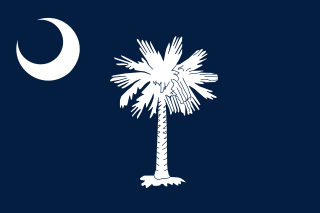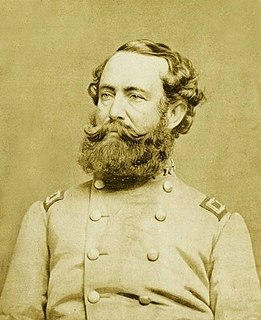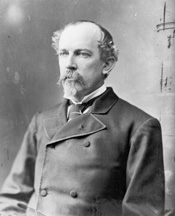The Edgefield Hussars comprised a military company raised in the state of South Carolina. It served in the Confederate States Army during the American Civil War, being redesignated as Company A, Cavalry Battalion, Hampton Legion. It fought in numerous battles in the Eastern Theater.

South Carolina is a state in the Southeastern United States and the easternmost of the Deep South. It is bordered to the north by North Carolina, to the southeast by the Atlantic Ocean, and to the southwest by Georgia across the Savannah River.

The Confederate States Army (C.S.A.) was the military land force of the Confederate States of America (Confederacy) during the American Civil War (1861–1865), fighting against the United States forces. On February 28, 1861, the Provisional Confederate Congress established a provisional volunteer army and gave control over military operations and authority for mustering state forces and volunteers to the newly chosen Confederate president, Jefferson Davis. Davis was a graduate of the U.S. Military Academy, and colonel of a volunteer regiment during the Mexican–American War. He had also been a United States Senator from Mississippi and U.S. Secretary of War under President Franklin Pierce. On March 1, 1861, on behalf of the Confederate government, Davis assumed control of the military situation at Charleston, South Carolina, where South Carolina state militia besieged Fort Sumter in Charleston harbor, held by a small U.S. Army garrison. By March 1861, the Provisional Confederate Congress expanded the provisional forces and established a more permanent Confederate States Army.

The American Civil War was a war fought in the United States from 1861 to 1865, between the North and the South. The Civil War is the most studied and written about episode in U.S. history. Primarily as a result of the long-standing controversy over the enslavement of black people, war broke out in April 1861 when secessionist forces attacked Fort Sumter in South Carolina shortly after Abraham Lincoln had been inaugurated as the President of the United States. The loyalists of the Union in the North proclaimed support for the Constitution. They faced secessionists of the Confederate States in the South, who advocated for states' rights to uphold slavery.
Contents
The original militia company was formed in 1833 by Capt. Andrew Pickens Butler, in Edgefield, South Carolina. By 1851, it was a part of the Edgefield Squadron, 2nd Regiment of Cavalry, South Carolina Militia. On May 8, 1861, the company was accepted into Confederate service as part of Hampton’s Legion. It later became Company I, 2nd South Carolina Cavalry Regiment, when the cavalry battalion of the Legion was reorganized on August 22, 1862.

A militia is generally an army or some other fighting organization of non-professional soldiers, citizens of a nation, or subjects of a state, who can be called upon for military service during a time of need, as opposed to a professional force of regular, full-time military personnel, or historically, members of a warrior nobility class. Generally unable to hold ground against regular forces, it is common for militias to be used for aiding regular troops by skirmishing, holding fortifications, or irregular warfare, instead of being used in offensive campaigns by themselves. Militia are often limited by local civilian laws to serve only in their home region, and to serve only for a limited time; this further reduces their use in long military campaigns.
Edgefield is a town in Edgefield County, South Carolina, United States. The population was 4,750 at the 2010 census. It is the county seat of Edgefield County.












